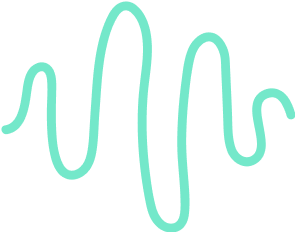Interview Agenda Template
.svg)
Recruitment
.svg)
1. Welcome & Company Overview
Kick things off with a warm welcome and set a positive tone. Introduce each interviewer by name and title, briefly present the company’s mission, core values and recent milestones. Explain the structure and timing of the interview so the candidate knows what to expect.
.svg)
2. Candidate Introduction & Elevator Pitch
Invite the candidate to give a concise overview of their background—education, key roles, and proudest achievements—in 2 minutes. Listen for clarity, storytelling ability, and how their experience aligns to the role.
.svg)
3. Role & Team Deep‑Dive
Describe day‑to‑day responsibilities, KPIs, reporting lines, tools, and cross‑functional stakeholders for the position. Share short‑, mid‑, and long‑term goals so the candidate can ask targeted questions.
.svg)
4. Technical/Functional Assessment
Probe the hard skills required for success. Use a mix of:
- Competency questions (e.g. “Explain how you optimised a SQL query on 10M+ rows”).
- Live problem‑solving or white‑boarding.
- Scenario walk‑throughs tied to actual challenges the role will face.
.svg)
5. Behavioural & Culture‑Add Interview
Use the STAR method (“Situation – Task – Action – Result”) to uncover past behaviours that map to your leadership principles. Focus on:
- Ownership & accountability
- Adaptability & growth mindset
- Collaboration & conflict resolution
.svg)
6. Candidate Questions
Signal transparency and reciprocity. Allow 10 minutes for the candidate to ask anything about the company, team culture, roadmap, or growth opportunities. Clarify answers honestly.
.svg)
7. Evaluation Scorecard Alignment
Together, quickly review the Interview Scorecard criteria—skills, competencies, behaviours—and confirm that each interviewer has captured ratings in their ATS or shared doc.
.svg)
8. Closing & Next Steps
Thank the candidate, outline the decision timeline (e.g. “within 3 business days”), and explain any remaining stages (homework, reference checks). Confirm preferred contact method.
.svg)
9. Post‑Interview Panel Debrief
Immediately after the call, convene the interviewers for a 10‑minute sync to discuss impressions while they’re fresh, reconcile scorecard discrepancies, and decide whether to advance or reject.
.svg)
10. Admin & Compliance Checklist
Ensure all notes are logged in your ATS, GDPR‑compliant data handling is followed, and any external assessments are sent. Document feedback to support a fair, auditable process.
.svg)
11. Template – Minute‑by‑Minute Agenda
TimeSegmentOwner 0‑5Welcome & OverviewHiring Manager 5‑10Candidate Elevator PitchCandidate 10‑25Role & Team Deep‑Dive + Q&AHiring Manager 25‑45Technical/Functional AssessmentTech Lead / Panel 45‑60Behavioural & Culture FitPeople Partner 60‑70Candidate QuestionsPanel 70‑75Closing & Next StepsHiring Manager 75‑85Panel Debrief (internal)Panel
.svg)
12. Interviewer Prep Checklist
- Review candidate’s resume & LinkedIn.
- Prepare 3 role‑specific questions.
- Read last round feedback (if applicable).
- Test tech (camera, mic, whiteboard tool).
- Block 15 minutes post‑call for debrief.
.svg)
13. Candidate Pre‑Read
Send the candidate 24 hours beforehand:
- Meeting link & agenda outline
- Team org‑chart snapshot
- Company culture deck
- Any pre‑work or coding test instructions
.svg)
14. Decision Matrix
Use a 1‑5 scale for each criterion (Technical, Behavioural, Culture Add, Potential). Compute an overall Weighted Average to avoid bias and gut decisions.
.svg)
15. Follow‑Up Email Template
Provide a ready‑to‑send email snippet thanking the candidate, summarising next steps, and attaching any additional resources.
.svg)
.svg)
.svg)
.svg)
.svg)
.svg)
.svg)

Forget note-taking and
try Noota now
FAQ
In the first case, you can directly activate recording as soon as you join a videoconference.
In the second case, you can add a bot to your videoconference, which will record everything.
Noota also enables you to translate your files into over 30 languages.

.svg)
.svg)
